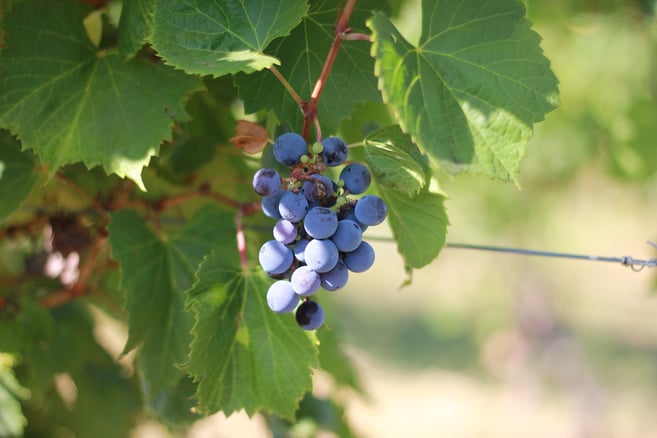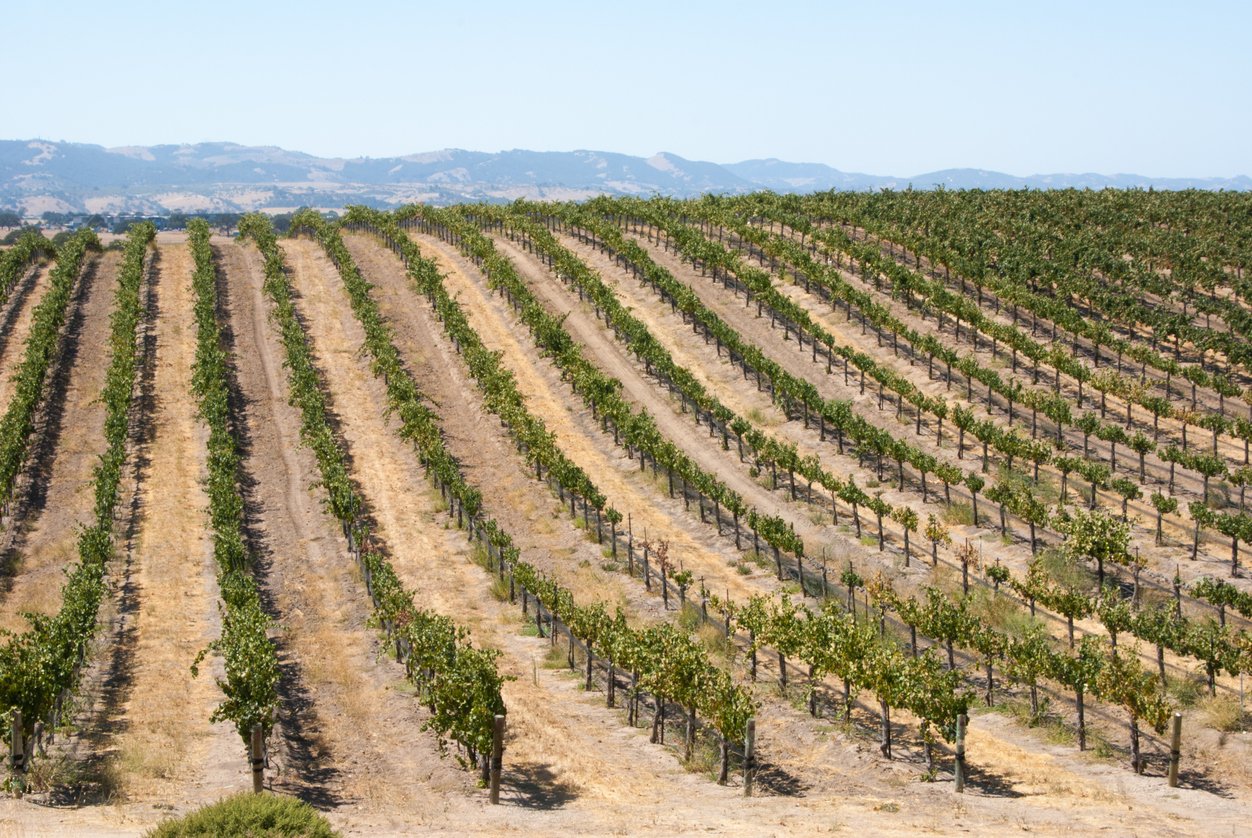Many of the world's wine-growing regions are getting hotter and drier. Facing the prospect of more severe and more frequent drought conditions, vineyards and researchers alike are exploring strategies to mitigate the impacts of climate change while maintaining yield and fruit quality.
The basic science is that direct sunlight on soil and foliage results in evaporation, which causes moisture levels to drop and temperatures to rise. Without intervention, the cycle of increasing heat and water loss continues.
Fortunately, the heat and moisture levels within a vineyard aren't dictated entirely by the day's forecast. Several management strategies can improve vines' ability to withstand extreme conditions.
Lowering temperatures—from the ground up
Adding organic material to the soil increases its capacity to store moisture. While terrain and soil type are limiting factors—shallow soils and steep slopes cause water to run off rather than infiltrate the ground—in general, improving soil health can increase water availability for vines.
Mulch under vines and cover crops between rows provide a barrier between the sun and soil. On the vine itself, even one leaf layer over grapes protects the bunch from direct radiation, according to an Australian study on managing grapes during heatwaves. Limiting summer pruning of leaves and lateral shoots to better shaded sides of vines can add protection from the sun and conserve water.

The study also examined canopy management and row orientation to reduce sun exposure and provide shading. Certain trellis types can reduce radiant heat: an upright structure on eastern and northern exposures, and a more umbrella shape on the southern exposure.
Artificial shade is another option—although it has its downsides: some methods of shading can reduce airflow, requiring more vigilant monitoring of pest and disease pressure.
Breeding for drought tolerance
Researchers are studying how vines in the desert Southwest manage to grow with limited moisture, in hopes of gleaning information relevant to growers in other regions.
“Taken at face value, we typically predict that when water becomes scarce, yields decline,” says University of California professor of viticulture Dr. Andrew Walker. But nature is complex, offering many biological adaptions—from thicker leaves to reduce transpiration, to deep vertical root growth—that enable some plants to use water more efficiently.
“The two avenues by which plants maintain hydration in the face of drought is preventing water loss from the leaves, and increased soil water access that depends on roots,” Walker explains. With that in mind, he and his team are working to identify rootstocks best able to maintain yields with limited water.
During periods of drought, soil salinity increases because salts are not being flushed from the soil. Identifying salt-tolerant rootstock is part of the current drought-related breeding research. Walker is also studying how the root architecture changes in response to drought—a research process that's necessarily slow.
“We have produced and are studying hybrid populations of rootstocks and various grape species with the goal of understanding the genetic basis of drought resistance," he says. "The entire process from breeding root to wine can take ten years or more. New technologies enable us to identify and concentrate on those hybrids with the highest potential."

Harnessing technology
Advances in irrigation techniques and technology also show great promise for producers dealing with drought.
“The conversion to drip irrigation in California vineyards has been a major step forward in water conservation,” Walker says.
The use of soil remote sensing, moisture probes, and plant stress data to fine-tune irrigation needs means growers are better able to ensure every drop of water applied contributes to the crop.
"Remote sensing of evaporation and transpiration based on thermal imagery will improve winegrape growers’ ability to quantify water needs during heatwaves and drought," says Dr. Lauren E. Parker, Postdoctoral Fellow with the USDA California Climate Hub. "Research shows that adopting irrigation recommendations derived through real-time thermal infrared temperature data can increase water savings."
Preparing now for future drought
When it comes to weathering drought conditions, some factors are obviously well beyond growers' control. For example, “The timing and duration of drought is an important factor in yield and quality, flowering and set being critical times that vines are particularly vulnerable to water stress,” Walker says.
That said, vineyards preparing in advance for hot and dry conditions should be better able to protect their crop, regardless of the drought's timing and duration. As much as researchers' long-range studies of drought-tolerant varietals, individual growers' readiness to build soil health, adjust management practices, and invest in new irrigation technologies may determine which vineyards continue to thrive as conditions change.
